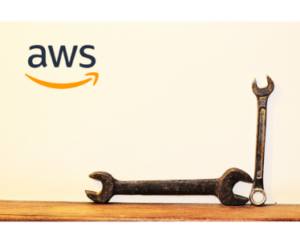TL;DR
Choosing between public and private cloud isn’t about which is “more secure.” It’s about who controls what, which risks you accept, and how you meet cost, performance, and regulatory goals. This guide gives you plain‑English definitions, a quick comparison table, a decision matrix, and step‑by‑step guidance—plus practical examples of controls to close real‑world gaps in identity, posture, data, and network security.
- Public cloud = massive scale and managed services; you own configuration and data security.
- Private cloud = maximum control and customization; you own more of the stack and operations.
- Hybrid = place each workload where it fits best; secure and govern across environments with one control plane.
Teams often standardize on a single control plane across public and private environments—e.g., a CSPM + SIEM platform such as Cy5’s ion Cloud Security Platform—so posture checks, detections, and evidence travel with the workload.
Definitions in this guide align with NIST SP 800‑145 (deployment models) and the major providers’ shared responsibility frameworks.
What is a Public Cloud?
A public cloud is a multi‑tenant environment where a provider delivers compute, storage, and services over the internet. You consume on demand, paying for what you use. The provider secures the underlying infrastructure; you secure configurations, identities, and data.
In practice, this means platforms like AWS, Microsoft Azure, and Google Cloud supply global capacity and hundreds of managed services—from databases to event buses and AI—while you remain accountable for securing accounts, IAM, network policies, and data classification and encryption. Provider documentation is explicit: security and compliance are shared responsibilities, varying by service (IaaS vs. PaaS vs. SaaS).
Also Check: Do-It-Yourself for Security Posture Evaluation
- 15-Min Azure Cloud Posture Checklist
- 15-Min AWS Cloud Posture Checklist
- 15-Min Google Cloud Posture Checklist
What is a Private Cloud?
A private cloud is single‑tenant infrastructure dedicated to one organization, operated in your data centers or by a hosting partner. You control the stack, placement, and networking; you also own most of the security and operational burden.
Typical platforms include VMware‑based environments or OpenStack clusters, either on‑prem or in a colocation facility. Private cloud shines where data sovereignty is non‑negotiable, audit trails must be bespoke, or performance needs are predictable and tightly controlled.
Security Comparison — Which is Safer?
Neither model is “inherently safer.” Public cloud offers world‑class infrastructure security; private cloud offers deeper control. Outcomes depend on controls you implement across identity, posture/configuration, data, and network—and how consistently you operate them.
Public Cloud Security Strengths
- Continuous hardening of data centers and hypervisors at hyperscale.
- Advanced services (KMS/HSM, managed IAM, private networking, DDoS protections).
- Confidential computing options (e.g., Azure confidential VMs with AMD SEV‑SNP / Intel TDX) that protect data in use by isolating VM memory from host/hypervisor access.
- Unified signal path: pipe critical telemetry into a SIEM without cross‑region detours; CSPM + SIEM in one platform reduces alert fatigue and MTTR.
Private Cloud Security Strengths
- Tailored isolation and micro‑segmentation; custom network paths.
- In‑house key ownership and bespoke attestation/controls across the entire stack.
- Direct control over logging, forensics, and change control processes.
Shared Responsibility, Explained
- In public cloud, the provider secures facilities, hardware, and virtualization; you must secure configurations, identities, workloads, and data. Azure and Google Cloud outline the same principle, with Google describing a “shared fate” approach that adds prescriptive guardrails.
- In private cloud, you inherit more security ownership: patching hosts, hardening hypervisors, and operating the network—plus all the “in‑cloud” duties you’d also have in public cloud.
A pragmatic way to implement shared responsibility is to pair CSPM baselines with SIEM‑grade correlation so misconfigurations and events resolve into one signal path—for example, via ion Cloud Security Platform.
The Cy5 Perspective
Most incidents trace back to misconfigurations, over‑privileged identities, unmonitored data exposure, and flat networks. Cy5’s reference architecture maps controls to each gap:
- Identity: least‑privilege baselines, conditional access, service account governance.
- Posture: continuous policy checks (CSPM), drift detection, IaC guardrails.
- Data: classification, envelope encryption, key ownership/rotation, tokenization.
- Workload: runtime threat detection (CWPP), image signing, SBOM checks.
- Network: private endpoints, micro‑segmentation/zero trust, egress controls.
Bottom line: secure configurations and operations determine outcomes in both models; the “logo” on the data center doesn’t.
Cost Comparison — Beyond CapEx vs. OpEx
Public cloud is elastic OpEx with deep managed services; beware egress and ungoverned growth. Private cloud can lower TCO for steady demand if you’re equipped to operate it. The right answer often mixes both.
What Usually Surprises Teams
- Egress fees: moving data out of public cloud (to the internet or between regions/providers) adds up—after the first free/discounted tier, common list rates are around $0.09/GB in many US regions (varies by service and region). Always check current pricing pages.
- Staffing & tooling: private cloud savings evaporate without mature SRE, security operations, and lifecycle management.
- Service gravity: managed databases, analytics, and event services can reduce build/operate costs in public cloud—if you keep configurations tight.
Tool sprawl can inflate both license and log egress costs. If you centralize telemetry, model DTO explicitly—typical internet egress starts around $0.09/GB in many US regions (after free tiers; varies by service/region). In the EU/UK, 2025 changes mean providers are lowering or waiving certain transfer fees to align with the EU Data Act.
Mini ROI frame (use as a sanity check)
12-month TCO ≈ Infra (compute+storage+network)
+ Platform & licenses
+ Ops staff time
+ Security & compliance tooling
+ Egress & interconnect
– Committed-use discounts / reserved capacity
– Rightsizing & autoscaling savings
Plug in realistic egress GB/month, ops FTEs, and service costs for each scenario. If you’re in the EU/UK, note that cloud switching and certain transfer fees are changing in 2025 under the EU Data Act—improving portability and potentially reducing some data transfer costs.
Compliance, sovereignty & 2025 regulations
Regulators increasingly expect portability, interoperability, and accountability—whichever cloud model you use.
- EU Data Act becomes applicable 12 September 2025. Expect standardized contract terms, portability improvements, and restrictions around switching charges for cloud services. Several providers have already announced changes to fees in the EU/UK markets ahead of the date.
- NIS2 (EU) tightened cybersecurity obligations across critical sectors. While transposition deadlines landed in late 2024, implementation has continued through 2025 with technical guidance for digital infrastructure providers. If you operate in the EU, ensure your cloud controls map to NIS2 risk management and reporting duties.
Tip: Map your controls to a recognized framework like the Cloud Security Alliance Cloud Controls Matrix (CCM) to show coverage across identity, data, and operations for auditors and customers.
Map controls to CSA CCM and keep auditable trails by tying CSPM posture evidence and SIEM events to the same requirement IDs. This aligns with ENISA’s NIS2 technical guidance emphasis on demonstrable risk management measures.
Performance & Scalability
For latency‑sensitive trading, high‑throughput analytics, or AI pipelines with data gravity, placement matters:
- Public cloud brings global regions, high‑performance instances, and accelerators. Many platforms now offer confidential VMs so you can process sensitive data while keeping it shielded from the host/hypervisor.
- Private cloud gives deterministic performance, custom network paths (e.g., RDMA fabrics), and predictable bandwidth where you control noisy neighbors.
Design for burst (public) and steady (private) patterns, then stitch with secure private connectivity and consistent identity/policy.
Trend Watch: Hybrid and Repatriation
2025 data shows a pragmatic shift: growth in public cloud continues, yet many organizations are right‑sizing placement and moving select workloads to private environments for predictable performance, cost, or sovereignty—while staying hybrid overall. Flexera’s 2025 survey notes repatriation of a subset of workloads even as overall cloud usage grows and FinOps teams expand to manage costs.
What this means for you: assume you’ll run hybrid. Focus investments on portable architectures, consistent identity & policy, and observability across environments. Cy5 acts as the common security control plane so security posture, identity, data controls, and threat detection travel with your workloads.
Decision Guide: Which Model is Right For You?
| If you are… | Try this first | Why |
| A startup/scale‑up with spiky demand | Public cloud for elasticity and service depth | Speed, managed services, and global scale outweigh CapEx; keep misconfigurations in check. |
| A regulated enterprise (finance/health) with strict residency | Private cloud for core systems; extend with public-region services as needed | Control placement, audit, and key ownership; use public cloud where managed services are essential. |
| A global enterprise with diverse workloads | Hybrid with clear placement policy | Mix elasticity with control; enforce uniform identity, encryption, and segmentation. |
| AI/ML‑heavy with sensitive data | Hybrid + confidential VMs in public cloud | Keep training/serving flexible; protect data in use; manage egress and IP safeguards. |
A simple rule
- Spiky/innovative, service‑rich → lean public.
- Steady/regulatory, bespoke networking → lean private.
- Most organizations → choose hybrid, then standardize security and governance.
Reference Architecture: How Cy5 Secures Any Mix
Cy5’s ion Cloud Security Platform unifies Identity (CIEM), Posture (CSPM), Workload (CWPP), Data (DSPM), and Network controls, with SIEM‑grade correlation for detections.
- Identity (CIEM): enforce least privilege for humans and workloads; auto‑remediate risky roles; rotate secrets.
- Posture (CSPM): continuous checks against baselines (encryption, logging, network exposure); prevent drift from IaC.
- Workload (CWPP): image signing, runtime detection, kernel‑level telemetry, exploit protection.
- Data (DSPM + key management): discover/classify; envelope encrypt; customer‑managed keys; tokenize PII.
- Network (ZTNA/micro‑segmentation): private endpoints, service‑to‑service policy, least‑privileged egress.
- Compliance evidence: auto‑map controls to CSA CCM and your frameworks; keep auditable trails.
Outcome: unified policies and signals across public and private footprints, so you can place workloads where they fit without compromising security.
Case Example
A payments company runs customer‑facing APIs and analytics in public cloud and keeps card vault services in a private cloud. They use Cy5 to:
- Auto‑detect open public endpoints and over‑privileged service roles.
- Enforce CDE segmentation and tokenization.
- Provide one place to prove controls for audits (PCI DSS, SOC, NIS2 in EU operations).
- Cut egress by switching analytics pipelines to regional processing and compressing export windows.
Result: fewer misconfigs, faster audits, and a 22% reduction in total cloud spend after eliminating unnecessary data transfer paths (internal data; your mileage will vary).
By consolidating posture findings and SIEM detections in one timeline, the team closed loops faster and reduced noise without adding tools.
FAQs: Public Cloud vs Private Cloud
Public cloud is multi‑tenant infrastructure and services delivered over the internet; you consume on demand and the provider secures the cloud, while you secure what you put in it (configurations, identities, data). Private cloud is single‑tenant, dedicated to one organization and operated on‑prem or by a hoster; you gain fine‑grained control over placement, networking, and audit trails but take on more operational burden. In practice, the line is less about “safety” and more about control vs. elasticity. Most orgs end up hybrid: managed services and global scale in public, sovereignty‑bound or latency‑sensitive workloads in private. Use CSPM to enforce configuration baselines and SIEM to correlate events across both so security posture and detections don’t fragment.
Neither model is “inherently safer.” Public clouds deliver world‑class physical and platform security; private clouds deliver deeper customization and isolation. Outcomes hinge on identity, posture, data, and network controls—and on how consistently you operate them under shared responsibility. In public cloud, the provider secures facilities/virtualization; you must secure accounts, misconfigurations, keys, and data flows. In private cloud, you own still more (hardening hosts, patching, network ops). Many teams reduce risk by unifying CSPM (to prevent and auto‑remediate drift) with SIEM (to correlate detections), e.g., via a single control plane.
Not always. For steady, predictable workloads and mature SRE/security operations, private can beat public on 12‑ to 36‑month TCO. Public usually wins when demand is spiky or the managed services stack (databases, AI, analytics) saves you build/operate time. Budget carefully for egress (often ~$0.09/GB to the internet in many US regions) and for cross‑region/zone transfers. In the EU/UK, 2025 rules improve switching and portability; several providers adjusted transfer fees as the EU Data Act took effect. Model DTO explicitly and keep logs near compute to avoid unnecessary export costs.
A payments company runs customer APIs and analytics in the public cloud for elasticity, while keeping the card‑vault in a private cloud for residency and isolation. A CSPM baseline enforces encryption, logging, and segmentation across both; a SIEM correlates detections from IAM, network, and workload telemetry into a single queue for the SOC. Confidential VMs in public cloud protect “data in use” for selected pipelines. Result: fewer misconfigs, faster audits, and lower DTO by processing regionally.
Use customer‑managed keys, envelope encryption, and private connectivity; limit egress; and, for high‑sensitivity workloads, consider confidential computing (e.g., Azure confidential VMs with AMD SEV‑SNP or Intel TDX) plus guest attestation. Keep secrets rotated, scope IAM tightly, and tokenize PII when feasible. Pair CSPM (policy checks/guardrails) with SIEM (runtime analytics) so you detect policy breaks and anomalous access as they happen.
CSPM (Cloud Security Posture Management) prevents and fixes misconfigurations and drift across cloud resources (encryption, exposure, logging, network). SIEM (Security Information and Event Management) centralizes and correlates events/logs for investigation and alerting. Together, CSPM keeps your environment in a good state, and SIEM tells you when behavior deviates. Some platforms unify both—ion Cloud Security Platform is one example—to keep posture findings and detections in one context.
CSPM focuses on configuration and compliance baselines; CIEM on identities/permissions (least privilege, access paths); CWPP on workload/runtime threats (images, processes, kernel telemetry). Mature programs run all three, mapped to CSA CCM controls and surfaced through a SIEM for triage.
Plan for egress costs and portability. In the EU/UK, 2025 rules improve switching and limit certain charges; some providers have already reduced or waived fees.
Use customer‑managed keys, private connectivity, confidential VMs where available, and strong tokenization.
Action Plan (90 days)
- Weeks 1–2: Baseline security posture across current clouds; close top 10 misconfigs; define workload placement policy.
- Weeks 3–6: Implement least privilege in IAM; deploy segmentation; encrypt data with customer‑managed keys; document control mappings (CSA CCM).
- Weeks 7–12: Pilot confidential computing for a sensitive workload; model egress and interconnect costs; build a repatriation decision path for 1–2 steady workloads.
References (key sources)
- NIST SP 800‑145—deployment models and definitions.
- AWS Shared Responsibility Model—security of the cloud vs in the cloud.
- Azure shared responsibility—customer vs. platform tasks by service model.
- Google Cloud shared responsibility/shared fate—provider guardrails for secure configuration.
- EU Data Act—applicable from 12 Sept 2025; portability and fee restrictions.
- Provider fee changes in EU/UK—recent adjustments to data transfer fees.
- AWS pricing references—100GB free data transfer out; S3/egress examples.
- Confidential computing—Azure confidential VMs using AMD SEV‑SNP / Intel TDX.
- Flexera 2025 state of the cloud—repatriation and continued growth.
Final Thought
You don’t pick a cloud once. You place workloads continuously. Treat security, identity, and data controls as your portable foundation. With that in place, choosing public vs private isn’t a gamble—it’s a routine engineering decision you can make with confidence. Cy5 is ready to help you build that foundation.





